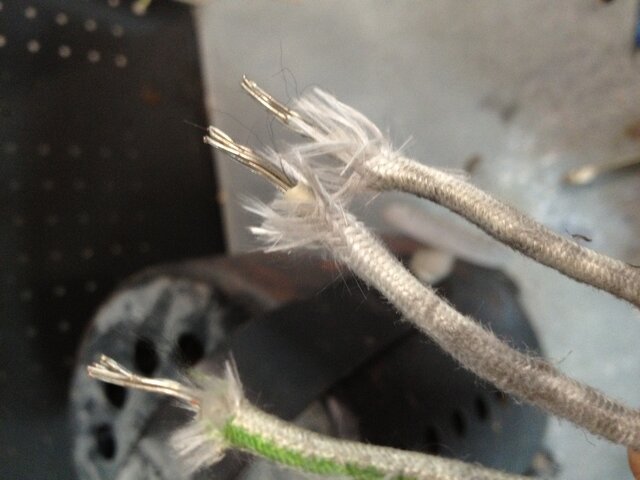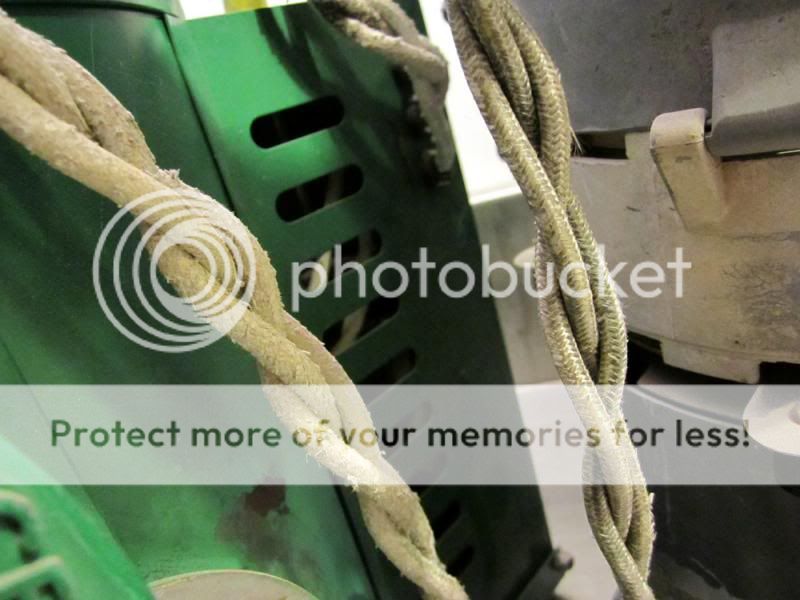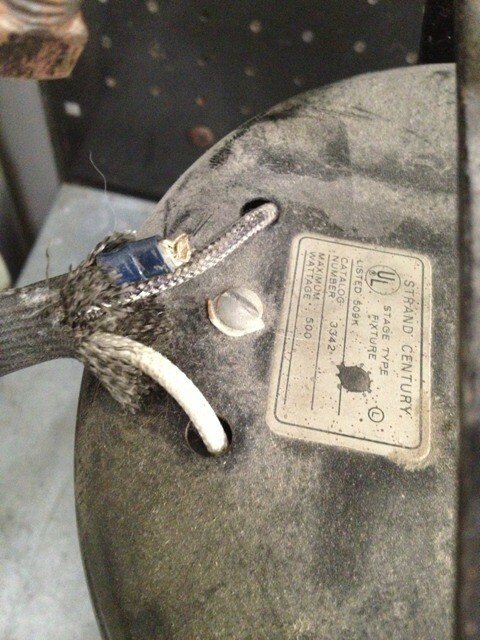llburg
Member
 So, this is a picture of the connector end of the whip on a Strand Century 3342 Fresnel. I used search and google to make a guess as to whether the wires are dangerous or not, and reached a mixed answer. It looks as though there is a rubber jacket under the cloth, and that makes me think it's safe. However, it left a white powdery material on my fingers after handling it, and that worried me. The whips on our other fixtures (mostly Altman-65q, 360w, skycyc, etc) do not leave anything behind on my fingers, and there is no cloth. Thoughts?
So, this is a picture of the connector end of the whip on a Strand Century 3342 Fresnel. I used search and google to make a guess as to whether the wires are dangerous or not, and reached a mixed answer. It looks as though there is a rubber jacket under the cloth, and that makes me think it's safe. However, it left a white powdery material on my fingers after handling it, and that worried me. The whips on our other fixtures (mostly Altman-65q, 360w, skycyc, etc) do not leave anything behind on my fingers, and there is no cloth. Thoughts?



